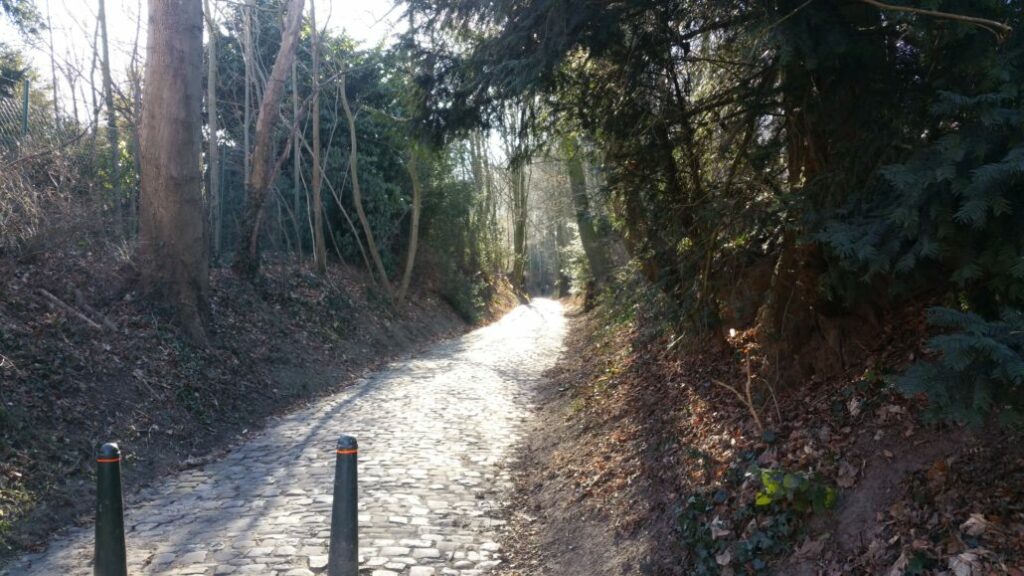It’s easy to miss the Crabbegat. This ancient sunken lane in southern Brussels is buried among the expensive villas on Avenue de Fré. The cobbled path lined with old beech trees has hardly changed in centuries. The earth banks on either side are overgrown with tree roots, ivy and rare plants. A street lamp is the only sign of modernity.
This shadowy country path was originally cut by a stream coming down from the high ground. For centuries, the path provided a convenient route into Brussels. Shady, in the summer. Sheltered, in the winter.
At the end of the lane, an inn dates back to 1570. One year after Pieter Bruegel. It was originally called, in Dutch, ’t Hoff ten Horen. Later, it became the Auberge du Vieux Cornet, a popular country retreat where Brussels’ writers and artists gathered in the 19th century.
This cobbled lane is one of the last holle wegen in Belgium. One of the last in Europe, you might add. In England, they are called ‘holloways’. The nature writer Robert Macfarlane explores some of these strange, secret paths in his book Holloway. They are ‘worn down by the traffic of ages and the fretting of water,’ he wrote. We are fortunate to have one of these haunting spots in a Brussels suburb.
Derek Blyth’s hidden secret of the day: Derek Blyth is the author of the bestselling “The 500 Hidden Secrets of Belgium”. He picks out one of his favourite hidden secrets for The Brussels Times every day.

